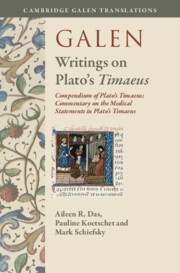Refine search
Actions for selected content:
615880 results in History

Galen: Writings on Plato's Timaeus
- Compendium of Plato's Timaeus; Commentary on the Medical Statements in Plato's Timaeus
- Coming soon
-
- Expected online publication date:
- November 2025
- Print publication:
- 30 November 2025
-
- Book
- Export citation
Conclusion
-
- Book:
- Distant Friends and Intimate Enemies
- Published online:
- 30 October 2025
- Print publication:
- 20 November 2025, pp 423-437
-
- Chapter
- Export citation
5 - Romance and Revulsion, 1881–1901
-
- Book:
- Distant Friends and Intimate Enemies
- Published online:
- 30 October 2025
- Print publication:
- 20 November 2025, pp 96-118
-
- Chapter
- Export citation

Russia's War on Ukraine
- The Four Roots of Putin's Invasion
- Coming soon
-
- Expected online publication date:
- November 2025
- Print publication:
- 04 December 2025
-
- Book
- Export citation
13 - From Alliance to Enmity, 1945–1953
-
- Book:
- Distant Friends and Intimate Enemies
- Published online:
- 30 October 2025
- Print publication:
- 20 November 2025, pp 256-282
-
- Chapter
- Export citation
Contents
-
- Book:
- Distant Friends and Intimate Enemies
- Published online:
- 30 October 2025
- Print publication:
- 20 November 2025, pp v-ix
-
- Chapter
- Export citation
7 - Interactions and Contradictions, 1906–1914
-
- Book:
- Distant Friends and Intimate Enemies
- Published online:
- 30 October 2025
- Print publication:
- 20 November 2025, pp 140-159
-
- Chapter
- Export citation
17 - Transformation and Reversion, 1989–1999
-
- Book:
- Distant Friends and Intimate Enemies
- Published online:
- 30 October 2025
- Print publication:
- 20 November 2025, pp 371-392
-
- Chapter
- Export citation
11 - Hopes and Horror, 1934–1941
-
- Book:
- Distant Friends and Intimate Enemies
- Published online:
- 30 October 2025
- Print publication:
- 20 November 2025, pp 219-239
-
- Chapter
- Export citation
Index
-
- Book:
- Distant Friends and Intimate Enemies
- Published online:
- 30 October 2025
- Print publication:
- 20 November 2025, pp 589-622
-
- Chapter
- Export citation
Introduction
-
- Book:
- Distant Friends and Intimate Enemies
- Published online:
- 30 October 2025
- Print publication:
- 20 November 2025, pp 1-9
-
- Chapter
- Export citation
10 - From Estrangement to Engagement, 1921–1933
-
- Book:
- Distant Friends and Intimate Enemies
- Published online:
- 30 October 2025
- Print publication:
- 20 November 2025, pp 196-218
-
- Chapter
- Export citation
Notes
-
- Book:
- Distant Friends and Intimate Enemies
- Published online:
- 30 October 2025
- Print publication:
- 20 November 2025, pp 438-523
-
- Chapter
- Export citation
Figures
-
- Book:
- Distant Friends and Intimate Enemies
- Published online:
- 30 October 2025
- Print publication:
- 20 November 2025, pp x-xii
-
- Chapter
- Export citation
2 - Diplomacy and Rebellions, 1807–1841
-
- Book:
- Distant Friends and Intimate Enemies
- Published online:
- 30 October 2025
- Print publication:
- 20 November 2025, pp 30-48
-
- Chapter
- Export citation
6 - Collision and Revolution, 1901–1905
-
- Book:
- Distant Friends and Intimate Enemies
- Published online:
- 30 October 2025
- Print publication:
- 20 November 2025, pp 119-139
-
- Chapter
- Export citation
3 - Beginning of a Friendship: Cooperation, Crisis, and Transformation, 1841–1860
-
- Book:
- Distant Friends and Intimate Enemies
- Published online:
- 30 October 2025
- Print publication:
- 20 November 2025, pp 49-71
-
- Chapter
- Export citation
14 - Crises and Coexistence, 1953–1963
-
- Book:
- Distant Friends and Intimate Enemies
- Published online:
- 30 October 2025
- Print publication:
- 20 November 2025, pp 283-311
-
- Chapter
- Export citation
Bibliography
-
- Book:
- Distant Friends and Intimate Enemies
- Published online:
- 30 October 2025
- Print publication:
- 20 November 2025, pp 524-588
-
- Chapter
- Export citation
12 - Allies, 1941–1945
-
- Book:
- Distant Friends and Intimate Enemies
- Published online:
- 30 October 2025
- Print publication:
- 20 November 2025, pp 240-255
-
- Chapter
- Export citation
